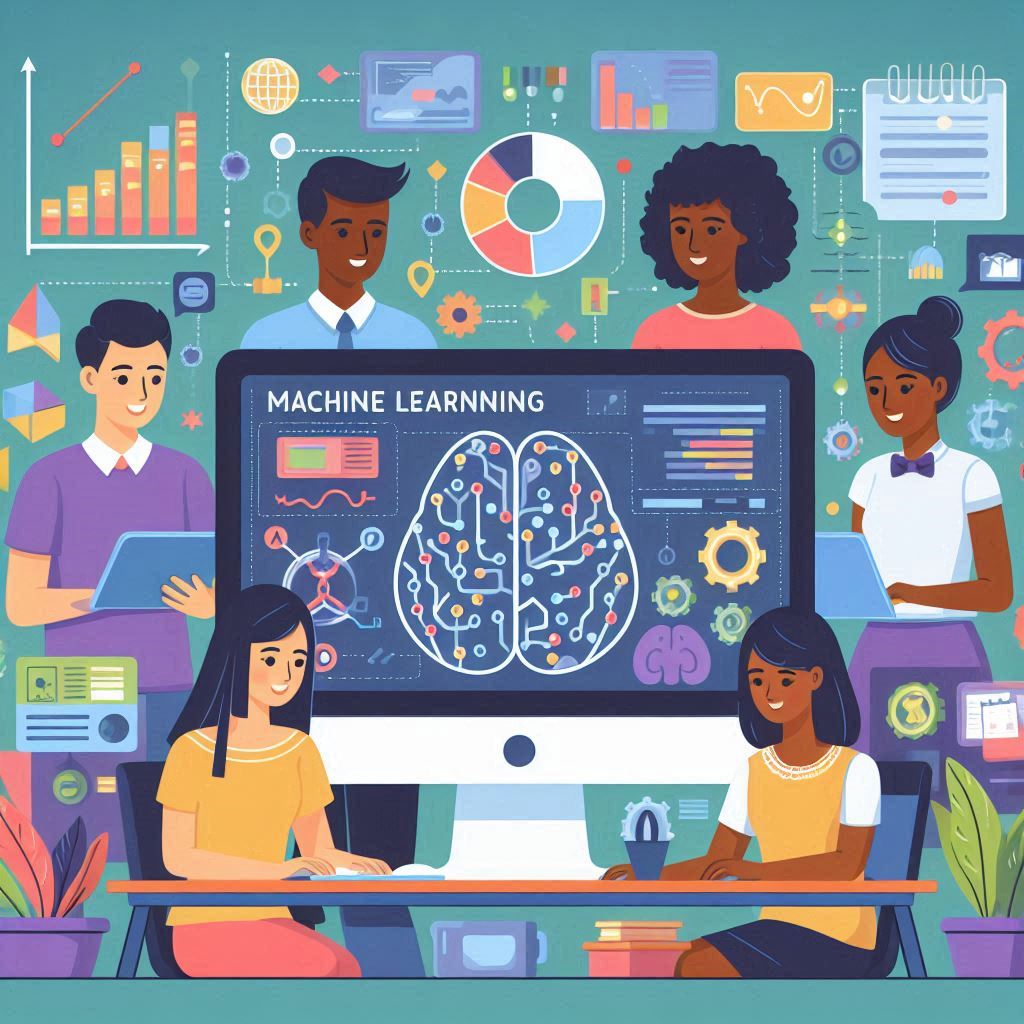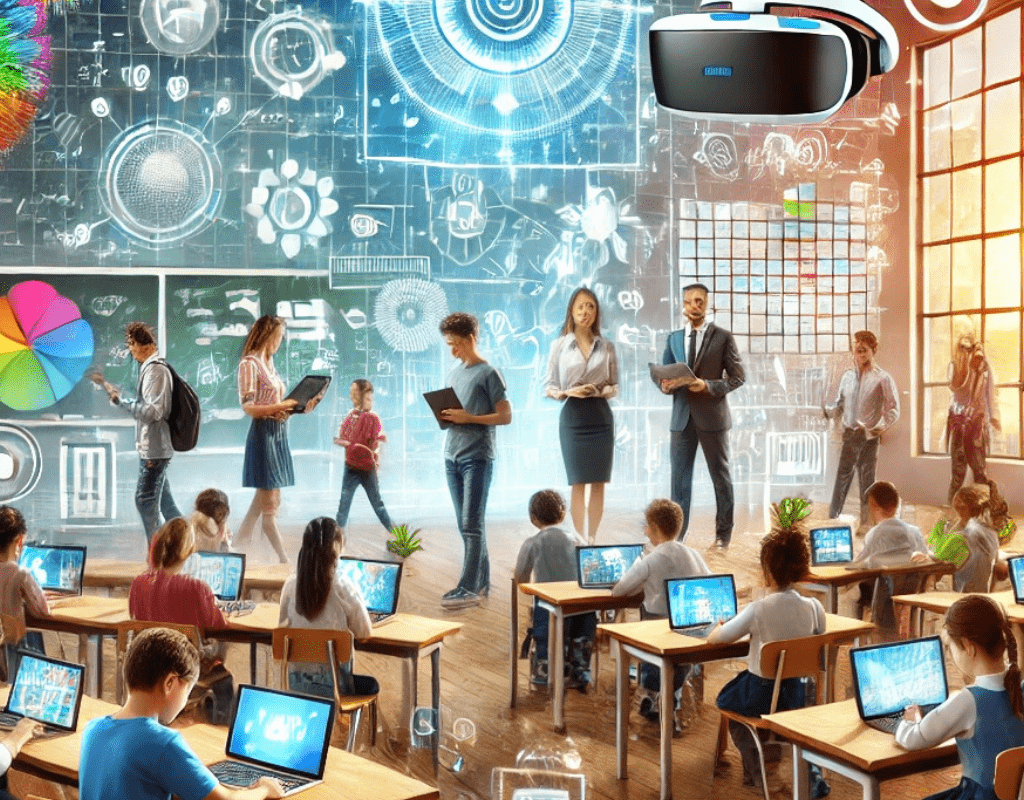Machine Learning vs. Deep Learning: Over the past ten years, artificial intelligence (AI) has developed quickly, transforming a variety of industries, including entertainment and healthcare. Deep Learning (DL) and Machine Learning (ML) are two fundamental ideas driving this change.
These phrases, which are frequently used interchangeably, refer to different strategies for using AI to solve challenging issues; each has advantages and uses.
It’s crucial to comprehend the subtleties and distinctions between machine learning and deep learning if you’re a tech enthusiast, data scientist, or AI developer. This book will help you better comprehend artificial intelligence (AI) and how to use these technologies in your profession.
We’ll look at their definitions, uses, technological parallels, practical applications, and projections of their future influence.
Let’s examine how machine learning and deep learning are influencing our environment and deconstruct these concepts.
Machine Learning (ML): The Foundation of AI
Enabling computers to learn and grow from data without explicit programming is the goal of machine learning (ML), a subset of artificial intelligence (AI) [6][8]. To find trends, forecast outcomes, and guide choices, it employs algorithms.
Over time, these algorithms improve their capabilities by learning from data. In real-world applications, machine learning algorithms examine data, identify trends, and forecast outcomes before providing the user with a response.
Artificial neural networks (ANNs) are used in deep learning (DL), a sophisticated subset of machine learning (ML), to simulate how the human brain learns.
Unlike simple machine learning models that require human interaction for modifications, deep learning models can determine the quality of their predictions through their neural networks, decreasing the requirement for human assistance.
Deep learning is particularly good at difficult tasks where finding complicated associations in data is essential, such as picture classification and natural language processing. Deep learning takes enormous volumes of data to function successfully, whereas machine learning techniques operate well with smaller datasets.
Deep Learning (DL): A Leap Closer to Human-Like Intelligence
Deep Learning revolutionised artificial intelligence, bringing robots closer to human-like cognition. Artificial neural networks that mimic the human brain have altered machine intelligence by allowing computers to learn and develop independently via complex layered designs called deep neural networks.
Deep learning is powerful due of its structure. These systems use layers of nodes to execute sophisticated computations to extract more abstract characteristics and insights from raw data. Like the brain, Deep Learning models process information hierarchically using this layered method. Deep Learning automates feature engineering, making it more efficient and able to find subtle patterns that humans may miss.
Deep Learning uses massive volumes of data, which is unique. These systems excel in processing unstructured data like photos, videos, and audio files, making them perfect for complicated real-world applications. This skill has enabled breakthroughs in autonomous vehicle navigation, face recognition, and natural language processing. Many of today’s most creative AI solutions are powered by the technology’s capacity to handle such various and complicated data types, transforming how we tackle challenging computational tasks.
Machine Learning vs. Deep Learning in AI Development
Machine Learning and Deep Learning support one another in driving AI progress, each with distinct characteristics. Machine Learning provides a broad toolbox that may be used in many areas and contexts. It can handle anything from simple categorisation to complicated prediction models, making it an essential AI tool. ML’s efficiency in handling structured data with little computing resources and training data is its beauty.
Deep Learning, albeit more specialised, can solve exceedingly complex problems that artificial intelligence could not. Computer vision, natural language processing, and voice recognition have been transformed by its capacity to handle and learn from large unstructured data.
DL demands enormous datasets and processing resources, but its ability to automatically find complex patterns and characteristics in data has advanced autonomous systems, medical diagnostics, and scientific study. In the AI ecosystem, ML provides broad applicability and efficient solutions for well-defined problems, while DL pushes the limits of what’s possible in handling complex, data-rich challenges that more closely mimic human cognitive abilities.
Future Trends in Machine Learning and Deep Learning

Machine Learning vs Deep Learning – Automated and personalised machine learning (ML) and deep learning (DL) will alter industries. As computer power grows, models will become more sophisticated and powerful, enabling deeper insights from large datasets. Explainable AI will become popular, solving the “black box” problem by making model choices public.
Edge computing will provide real-time device analytics, lowering latency and protecting data. ML and DL combined with NLP will make human-computer interactions more intuitive. Transfer learning uses pre-trained models to reduce development cycles, whereas reinforcement learning handles more complicated decision-making.
As algorithm biases are examined, ethical AI development will be vital. The future contains fascinating advances that will boost machine learning and achievement.
1. Emergence of Explainable AI (XAI)
Complex models are “black box” where decision-making processes are unclear, making machine learning and deep learning difficult. Explainable AI (XAI) develops methods to explain how models derive their judgements.
This will boost AI system confidence, notably in healthcare, finance, and law. By making AI predictions more understandable, XAI will help data scientists, regulators, and end-users reduce bias and improve justice.
2. Integration with Edge Computing
AI models now process data via cloud computing, but edge computing will become more popular. This implies machine learning models may be processed locally on smartphones, IoT sensors, and embedded systems without internet access.
This change will cut latency, allowing real-time decision-making for driverless cars, smart homes, and industrial automation. Edge computing keeps sensitive data on the device rather than sending it to computers, improving privacy.
3. Hybrid Approaches
Machine learning and deep learning may improve AI systems’ efficiency and accuracy in addressing complicated tasks. Deep learning is best for unstructured data like photos, text, and audio, whereas traditional machine learning models thrive at structured data.
A hybrid method may use machine learning algorithms for feature selection and preprocessing and deep learning for pattern detection and decision-making. This combination makes AI systems more adaptive and resource-efficient, making them appropriate for predictive analytics and natural language processing.
4. Ethics and Regulation
As AI evolves and integrates into society, ethical and regulatory issues will grow. To make AI systems fair, transparent, and safe, algorithmic bias, data privacy, and AI responsibility must be addressed. Governments and organisations worldwide are adopting AI deployment strategies to ensure ethical and legal compliance.
AI systems that correspond with human values are also being developed to serve society while limiting hazards.
Why Machine Learning and Deep Learning Matter
Machine Learning vs Deep Learning advance artificial intelligence, extending its capabilities. These disciplines improve automation, decision-making, and predictive analytics, changing healthcare, banking, transportation, and entertainment.
ML finds patterns in data and makes predictions, whereas DL allows complicated tasks like natural language processing, picture recognition, and autonomous systems—once thought impossible.
Techies, data scientists, and AI engineers must comprehend ML and DL to navigate AI’s future. These technologies fuel tailored recommendations, self-driving vehicles, business optimisation, and daily experiences. The next wave of innovation will come from ML and DL experts as AI becomes more pervasive.
To dig deeper? Use our AI development resources to keep ahead in this fast-changing industry.
Conclusion
Deep Learning and Machine Learning have transformed artificial intelligence, each contributing distinctively to technology and human capabilities. Deep Learning’s ability to process massive amounts of unstructured data and solve complex problems sets it apart from Machine Learning, which efficiently handles structured data and solves a wide range of applications.
They lead AI innovation in healthcare, autonomous systems, financial services, and many other fields.
Future breakthroughs in these technologies promise even more fascinating developments. Explainable AI will make complicated algorithms more visible and trustworthy, while edge computing will bring AI to gadgets for privacy and real-time processing. Hybrid techniques using ML and DL will improve system efficiency and adaptability.
To benefit society, AI growth must be balanced with ethics and regulation. Understanding these technologies and their ramifications is crucial for technology, data science, and AI developers to navigate and shape artificial intelligence in a connected world.




